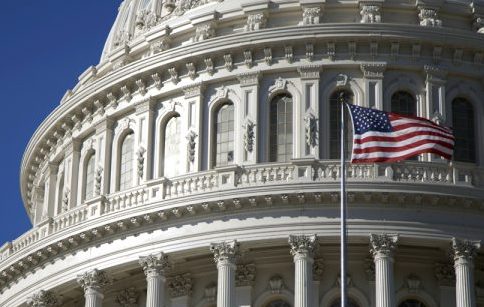Blog Post
Insight: Budgeting for the next downturn
By: Jonathan Ball, Legislative Fiscal Analyst, and Jennifer L. Robinson, Associate Director, Kem C. Gardner Policy Institute
One lesson state budget inquisitors can learn from living through two recessions – including one labeled as “great” – is that it is never too soon to start planning for the next one. This is not the result of strategic policy formulation, long-term planning, or some arcane academic theory – it’s simply for self-preservation. Yet, a recent panel on budgeting at the Western Political Science Association, in which we participated with our colleagues from across the West, demonstrated that some states haven’t learned that lesson.
The business cycle is not dead. According to data collected by the National Bureau of Economic Research, there were 11 business cycles between 1945 and 2009, when the current cycle began. The average length of a business cycle expansion in the United States trough to peak is 58 months – a little less than five years. The latest expansion began in June 2009 – making the current expansion eight years long.
The appropriate preparations for governments are not all that complex. Know your exposure to risk by measuring the downside magnitude associated with certain negative economic events. Estimate the probability of such an event. Build appropriate contingencies for the events – including formal rainy day funds, of course, but perhaps more importantly diversifying revenue streams, paying-down long-term obligations like debt and retirement, investing cash in infrastructure when you have it, and building goodwill with public employees, such as teachers, and citizens when times are good so that they’ll be motivated to chip-in when times are not so good.
Some western states, like Alaska, Wyoming, and New Mexico, experience counter-cyclical economic conditions because they rely heavily on oil and gas extraction for revenue. Those states are in a downturn now. In New Mexico, the emergency is not just budgetary, it’s constitutional problem. Due to a persistently underperforming economy, including low oil and gas prices over the last two years, high rates of poverty, and weak employment growth, New Mexico has faced a string of budget shortfalls for which it was not prepared. This spring, New Mexico’s Democrat-controlled Legislature addressed the latest $156 million shortfall by diversifying revenue – raising motor fuel taxes and registration fees by $350 million. Republican Governor Susana Martinez responded by not only vetoing the tax increase, but line-item vetoing $750 million in budgets for all of the state’s higher education institutions plus the Legislature’s operating budget. The Legislature entered a special session in May to address the governor’s veto. The governor rejected most of the proposals designed to improve the budget and all attempts to raise taxes. Instead, she opted to approve the use of severance tax bond proceeds from suspended infrastructure projects to balance the operational budget. The proceeds provided enough to balance the budget, but left only $24 million in reserve.
Hawaii – the state has enjoyed 7 years of increasing prosperity driven primarily by the strong tourism industry and construction industry. Unemployment is low at 2.8%. The number of visitors to the state grew 3% from 2015-2016. The record-breaking number of visitor arrivals and increases in federal spending has led to increased revenue during the 2017 fiscal year. One decision to highlight – In 2017 the legislature approved tax reforms – a state earned income tax credit for Hawaii’s lowest-income residents – especially important for this state because of the high cost of living.
Oregon – they are paying attention to the revenue sources and how revenue can be spent. The Oregon Office of Economic Analysis report foresees tougher times for the state: “Revenue growth in Oregon and other states will face considerable downward pressure over the 10-year extended forecast horizon. As the baby boom population cohort works less and spends less, traditional state tax instruments such as personal income taxes and general sales taxes will become less effective, and revenue growth will fail to match the pace seen in the past.” Wyoming has the least economically diverse economies in the nation (measured using Hachman Index). The legislature in 2017 established an executive council to oversee Governor Mead’s ENDOW economic development initiative – this is to develop and implement a comprehensive and coordinated strategy to diversify the state’s economy. Fed Chairman Janet Yellen famously said in 2015 that “the evidence suggests that expansions don’t die of old age.” Battle-weary budgeteers might point to another truism – “each day that passes, we’re another day closer to the next recession.” The extent to which governments take prudent steps now to prepare for the next economic contraction will determine their stability going into the next recession and their strength coming back out. If you are interested in reading more about these state and other western, visit the California Journal of Politics and Policy at the University of California-Berkeley: https://escholarship.org/uc/cjpp. This journal recently published reports from each of the 13 western states that provides an overview of the states’ economies, legislative sessions, and what they are doing to prepare for the next downturn. [1] OEA Report, p. 22-23.

